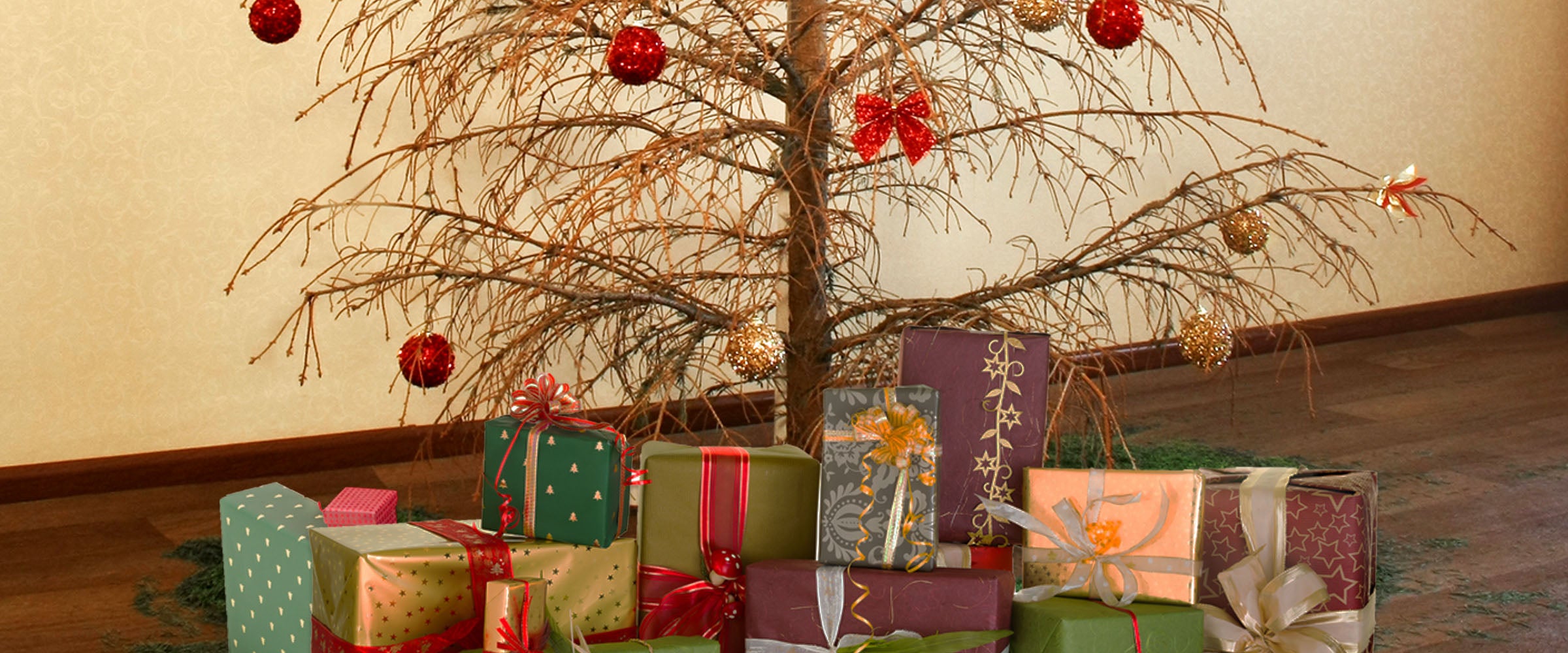My Christmas tree, which I bought nearly a month ago, looks, in the parlance of my great grandmother describing a loose woman, rode hard and put up wet. It’s brittle and emaciated, too, and the white lights that once put off the cozy feeling of snuggling inside a living room snow globe now cast a sallow, sickly tint. This means I have five days to sweat whether this thing is going to limp across the finish line of Christmas Day, or disappoint me and my family, ruining Christmas. Is there anything I can do?
“It’s hard when the tree is dead already,” Judy tells me on the phone from the Marina del Rey Garden Center here in Los Angeles. “The hard part is they are technically dead once they’re severed from the root, so how long will they stay green and lifelike? The most important thing is that it keeps drinking.”
I tell her I watered the damn thing. “But when it slows down drinking there’s really not a lot you can do.”
I can’t spray the needles to revive them? “Spraying the leaves doesn’t do anything,” Judy says. “It’s not attached to any roots to do anything.”
Isn’t there something I can pour in there? “There is a preservative for Christmas trees you can put it in, or a little Sprite if you have some. When it slows down drinking, it likes a little bit of sugar to help those needles stay on a little bit longer. So just keep it wet, keep that preservative in there. Just dump the whole bottle in.”
You can also make your own out of vinegar, bleach, corn syrup and water. Other tips include keeping it away from things that produce hot air and will dry it out, like fans, heaters, sunlight or your family blowhard. Some people swear by this, but other people say it does nothing. But all this means is that everything I could’ve done in prevention would be too little too late now.
So that’s it?
“That’s really it.”
The real problem here is that my live Christmas tree expectations weren’t realistic. I grew up with artificial trees, so I’m a Christmas tree noob. Turns out it’s fairly standard practice to put your Christmas tree up the first week of December, but increasingly, the Saturday after Thanksgiving has become the most popular day to purchase a tree (and it’s cheaper, too, because Black Friday is the most expensive day to buy one). Some sites even advise moving that purchase date to mid-November when the supply is higher quality and there’s less competition.
But that leaves us with several weeks of tree display time for something that no longer has a pulse. So what the hell are we supposed to do short of cryogenically freeze this thing?
“Two to three weeks is a good optimum,” Judy says for how long you should expect your tree to look the part. “This year, Thanksgiving was on the 22nd, so we had extra time, a whole month and a week before Christmas Day.”
But what I really want to know is when Judy buys her tree. People put up their trees at different times the world over, from when it gets cold, to December 13th to kick off the 12 days of Christmas. The Victorians, prudish down to every detail, waited until Christmas Eve to put the tree up.
“For me, personally, I get it around the 15th and then I have a decent tree until the New Year,” Judy told me. Great. So the truth is I did it wrong.
So now I’m back on Christmas tree death watch. But if it kicks the bucket so much as one day before show time, I’m spray painting it green. That’s strongly cautioned against with live trees because it will kill it, but I’m in luck, because you can’t kill something that’s already dead.

